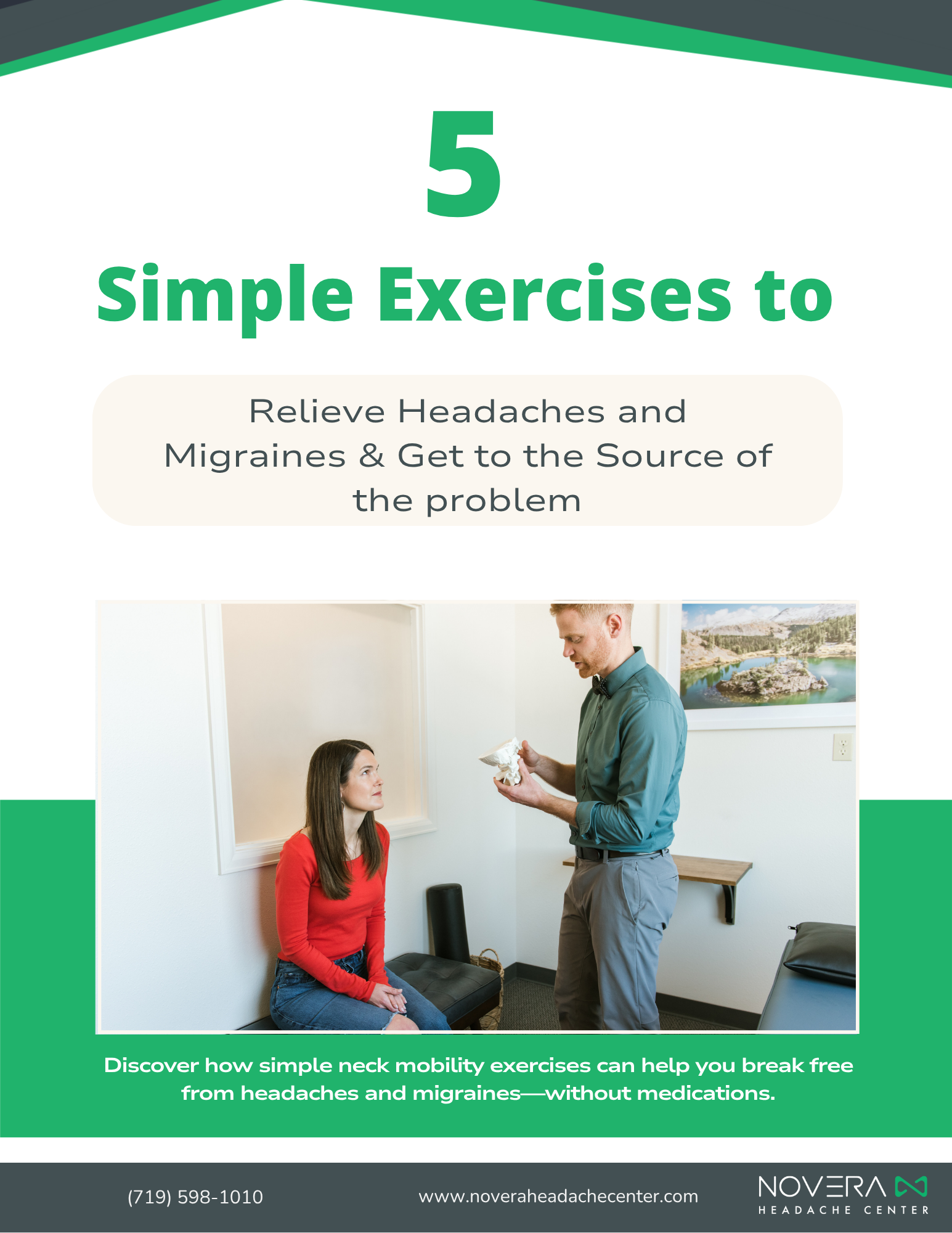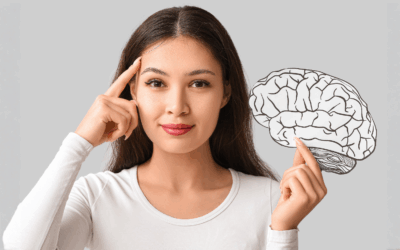Migraines are more than just pain—they’re complex and involve multiple systems in the body. For many, symptoms like dizziness, nausea, light and sound sensitivity, and even visual disturbances can be as debilitating as the headache itself. Novera’s very own Dr. Zander Romero sheds light on what’s really happening in the brain during a migraine and how to train the body to calm down and recover.
The Three Systems That Keep You Oriented
Your brain relies on three main systems to interpret your physical position in space:
- Visual (Eyes) – Tracks what you see and helps your brain understand movement.
- Proprioception (Body Awareness) – Feels pressure and movement, like the ground under your feet or how your neck moves.
- Vestibular (Inner Ear) – Acts like an internal gyroscope to manage balance and spatial orientation.
When migraines impact one or more of these systems, people can feel off-balance, disoriented, nauseous, or hypersensitive to movement and sound. Common scenarios that challenge these systems include driving, walking through grocery stores, or riding elevators and escalators.
Why These Systems Break Down
The integrity of these systems can degrade over time due to:
-
Head trauma (e.g., concussions, whiplash)
-
Inactivity or sedentary lifestyle
-
Chronic migraine episodes
-
Sensory overload
As Dr. Romero explains, many adults stop using these systems regularly, especially the vestibular system. “Kids are constantly training their bodies—on merry-go-rounds, swings, and slides. But as adults, we lose those regular stimuli and our systems weaken.”
How to Know You Have a Neurological Component
If you experience dizziness, nausea, or disorientation during everyday tasks like driving or watching a movie, or if you feel exhausted after navigating a visually busy environment, your body may be compensating for neurological deficits. Compensation can mask the problem but also lead to increased physical tension, especially in the neck, shoulders, and upper back.
The Role of Sensory Sensitivities
People with migraines are often hypersensitive to light and sound. Green light, in particular, has been shown to be more tolerable and even therapeutic. Studies indicate that exposure to green light for 1–2 hours per day can reduce headache frequency and intensity. Similarly, calming auditory inputs like theta wave soundtracks can help shift the nervous system from a “fight or flight” state into “rest and digest,” allowing the body to heal.
How to Train the Nervous System at Home
Dr. Romero outlines a practical, systematic approach to retraining the brain:
-
Use visual stimuli like rollercoaster or driving videos to gently challenge your vestibular system. Stop when symptoms reach a 4 out of 10 and return after a break.
-
Train balance by standing on unstable surfaces (like a rolled towel or foam pad) with your eyes closed to activate your vestibular and proprioceptive systems.
-
Incorporate games that require eye tracking—like 2D scrolling video games (e.g., classic Mario)—to improve visual coordination in a fun way.
-
Reduce sensory load by controlling lighting and sound during recovery.
Expect Progress, Not Perfection
Like working out, neurological retraining may temporarily increase symptoms as your brain adapts. But with consistency and guidance, patients begin to notice improvements in energy, balance, and motion tolerance. This complements manual therapy aimed at improving neck function and relieving tension in overworked muscles.
The Neck-Nervous System Connection
Dysfunction in the neck often intensifies neurological symptoms. When dizziness or nausea is triggered by turning the head, people instinctively limit their movement. This leads to increased stiffness and weakness in muscles like the upper traps and cervical spine, reinforcing the cycle of pain. Addressing these issues together—mechanical and neurological—is what makes the Novera approach unique and effective.
If these symptoms sound like something you experience, come see our team, including Dr. Romero, at Novera: Headache Center and pursue lasting relief from debilitating symptoms!




